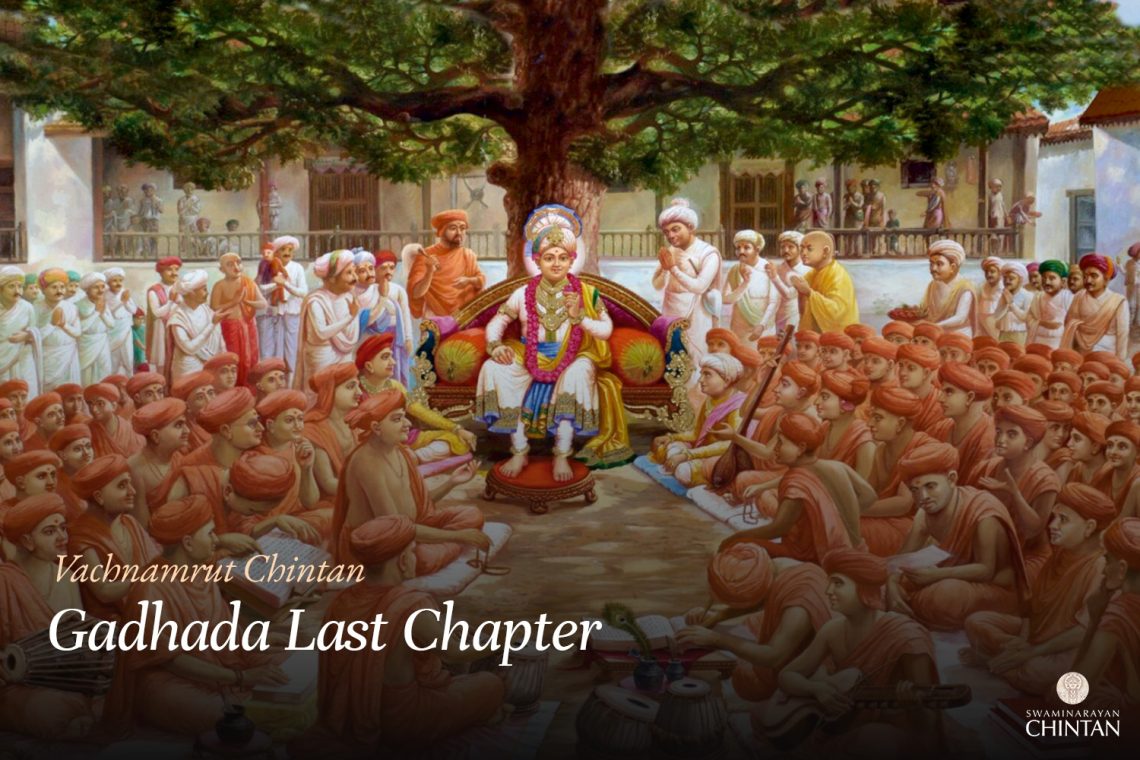Central Insights:
- The recognition of Swabhav (nature).
Key Points:
- Actions performed by the soul in an outward-facing state, which become one with the soul, are referred to as Swabhav.
- Swabhav can be overcome by devotion to Bhagwan accompanied by Atmanishtha (firm faith in one’s true self).
Explanation:
In this Vachanamrut, Dinanath Bhatt first asked a question:
“Maharaj, Kal (time) is said to be a faculty of Bhagwan, and Karma (deeds) are those performed by the soul. But what exactly is Swabhav (nature)?”
Maharaj replied:
“The actions performed by a soul in its past births, upon ripening, assimilate with the soul and become one with it. Just as fire pervades iron and makes it hot, those actions, after ripening, remain associated with the soul. This is known as Swabhav, Vasana (unfulfilled desires), or Prakruti (inherent tendencies). Sadguru Gunatitanand Swami has explained in Prakaran 3, Vachanamrut 192, ‘The power of Swabhav surpasses all else. Thoughts related to sensory objects are termed Vasana, but thoughts that arise even when remembering Bhagwan are termed Swabhav.’
In this Vachanamrut, Vasana and Swabhav are considered the same. However, Sadguru Gunatitanand Swami goes deeper and highlights a subtle distinction: Swabhav is slightly different from Vasana. Maharaj also conveyed that the actions performed by a soul while being outward-facing assimilate with the soul. When one sits for Bhajan (devotional worship) or remembrance of Bhagwan, these outward-facing actions, which have merged with the soul, do not allow it to turn inward. This is what Maharaj referred to as Swabhav, and Swami has described it similarly. Swami further elaborates that desires for sensory objects are termed Vasana, while the inner impulses that prevent one from engaging in Bhajan are called Swabhav.
Vasana demands its hunger to be satisfied, whereas Swabhav has no such hunger but stubbornly resists Bhajan and devotion. Vasana ceases once its hunger is temporarily satisfied but resurfaces over time. On the other hand, Swabhav remains ever vigilant in opposing devotional efforts, making it unique in its persistence.
Then, Muktanand Swami asked: “Maharaj, what is the remedy for overcoming Swabhav and Vasana?”
Maharaj replied: “The remedy is devotion to Bhagwan accompanied by Atmanishtha. Without Atmanishtha, one’s love for Bhagwan can also extend to other things, and without devotion, Swabhav cannot be conquered without Bhagwan’s support. Therefore, when both are present, Vasana and Swabhav can be truly conquered.”
Glossary
| Svabhav – Nature The inherent tendencies or qualities assimilated by the soul due to actions in past lives, resisting inward focus. |
| Prakruti – Inherent tendencies Similar to Svabhav, referring to the nature and tendencies the soul carries from past actions and impressions. |
| Vasna – Latent desires Deep-rooted tendencies or impressions that drive thoughts, actions, and attachments, influencing spiritual progress. |
| Atmanishtha – Steadfastness in the realization of the soul The firm realization and understanding of the soul’s true nature, living beyond the influence of three kinds of body |
| Devotion – Bhakti |
| Bhagwan – God The supreme being who is both transcendental and manifest, bestowing grace upon devotees. |
| Bhajan – Devotion |

